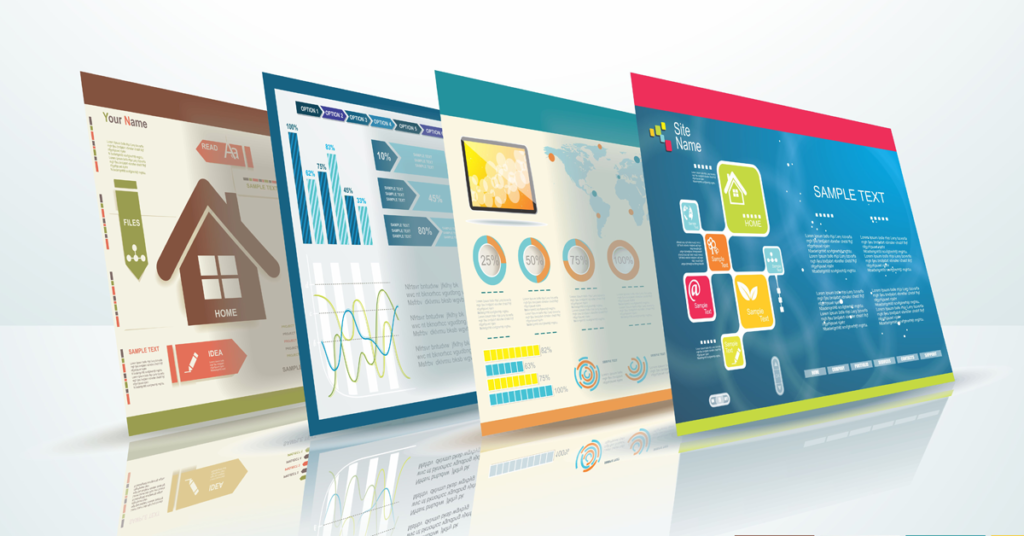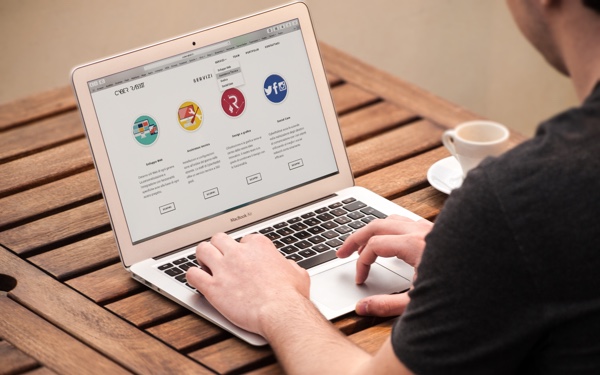As you dive into the world of digital marketing, you’ll likely encounter a whole new vocabulary and set of concepts. If you haven’t already, you’re bound to have questions about how landing pages fit into your digital marketing strategy. Developing a landing page sounds like a simple task, and it can be, but we want to stress that landing pages are vitally important to lead conversion.

What is a Landing Page?
A landing page is any web page that a consumer can land on, but in the marketing realm, it’s usually a standalone page, distinct from your homepage or any other page, that serves a single and focused purpose. A landing page is a follow up to any promises that you’ve made in your content. Essentially, it’s the next step toward a visitor becoming a customer. Your landing page lets you make a trade, some sort of special offer, piece of information or a deal, in return for providing contact information.
Landing pages can be click through, leading to another page such as your e-commerce site, or lead generation based. Lead generation landing pages typically offer items like an eBook, free trial, contest entry or webinar registration in return for the submission of contact information. A good landing page will do its job by convincing a potential customer that it’s worth it to provide personal details in return in exchange for whatever you have to offer. Landing pages can be found through a general search or via your company website, increasing the likelihood that a potential customer will end up there.
There’s no need to have just one landing page, or even just one landing page at a time. In fact, experts in the marketing would probably suggest that you maintain multiple landing pages, targeted toward segmented customer populations.
Why Use Landing Pages?
You’ve done a great job building your brand and creating a website that represents it. Now you have to make sure that all of that hard work translates into sales. If you are looking for an effective lead conversion tool, landing pages are definitely the way to go.

A landing page is a great way to drive traffic, improve your SEO and build your brand. Approximately 68% of B2B businesses use landing pages to generate leads for future conversion. Fortunately for you, 44% of these clicks are directed toward home pages, which, as we’ll discuss, is not a good strategy. Landing pages lead customers to a specific product, service or offer and encourage them to take action. This is your opportunity to create conversions and build your customer base.
If landing pages are so important, why isn’t every business using them? Well, there is a misconception that they are hard to create and maintain. Fortunately, that simply isn’t true. Building an effective landing page is less about flashiness and more about getting the consumer what they’re after.
What Makes a Good Landing Page?
First off, your home page should not be your landing page. You need to send prospective customers to a page that will let them take advantage of whatever special offer you’ve promised them. Since they are tied to something specific, your landing pages have a better chance of capturing attention for a longer period of time. Good landing pages do several things:
1. They zero-in on the offer, not the company. Your future customers are clicking for a reason, and duping them by not giving them what you’ve promised is not going to form a good first impression. Now is not the time to give a detailed history of your company. This isn’t to say that the landing page should not be tied to your company brand. Just the opposite. They should serve a separate function, yet it should still be an extension of your brand.
2. They are focused and free of distractions. The content on your landing page should have the end-goal of getting the user what they want while completing the registration process. Having a single call to action like a phone call or a subscribe link will increase the likelihood of a conversion.
3. The forms are not intimidating. Lengthy forms can be daunting to visitors and may encourage them to move on, rather than take advantage of whatever opportunity you are offering. If you simply can’t shorten your form, break it into steps, and let the user see exactly where they are in the process. For example, listing their name and address may be step one of four.
We have used granular forms in the past to improve the user experience and encourage users to give up their valuable data.
4. They speak to a specific audience. Segmenting your customer base helps you to target specific consumers through customized campaigns. If you have a base that’s drawn to a particular offer, such as an eBook or discount, your landing page can serve as a built-in segmentation device, allowing you to nurture these leads effectively going forward. You can even set up custom messaging based on how some visitors filled out their forms. For Example: If one of your form questions asks about their role in a company, you could have a message for sales staff and another marketing orientated message if they identify themselves as a marketer.
5. They collect specific information about your prospective customers. Speaking of specific audiences, even if you draw the right crowd, they can’t be converted if you don’t collect the right information. The collection of demographic data should include more than simply a name and email address. It should also give you some idea of why a person clicked and what their long-term connection to your company might be.
6. They provide your special offers with a home. Unless they are tied to landing pages, your online special offers will do nothing to benefit your business. Creating landing pages provides a place for your offers to reside.
7. They provide a thank you. Your landing page should always be followed up with a thank you. This is not only polite but assures the consumer that they have completed the registration process. Maybe there are some follow-up offers on this page or maybe you could direct them to a blog or resource to keep them engaged.
8. They allow users access to other marketing channels. A customer likes what you’ve just offered. Now you can provide links to other offers, your social media profiles or an email list sign up. Although as mentioned above, it is important to maintain a single desired outcome for your visitors so try to keep the social links to a miminum.
There is no doubt about it, we are certainly living in a digitally connected world. Moving boldly forward with a digital marketing campaign can easily be one of the best investments that you make for your business. As you build your digital marketing toolbox, including landing pages is a smart move, and both you and your customers will reap the benefits.

Stay Connected